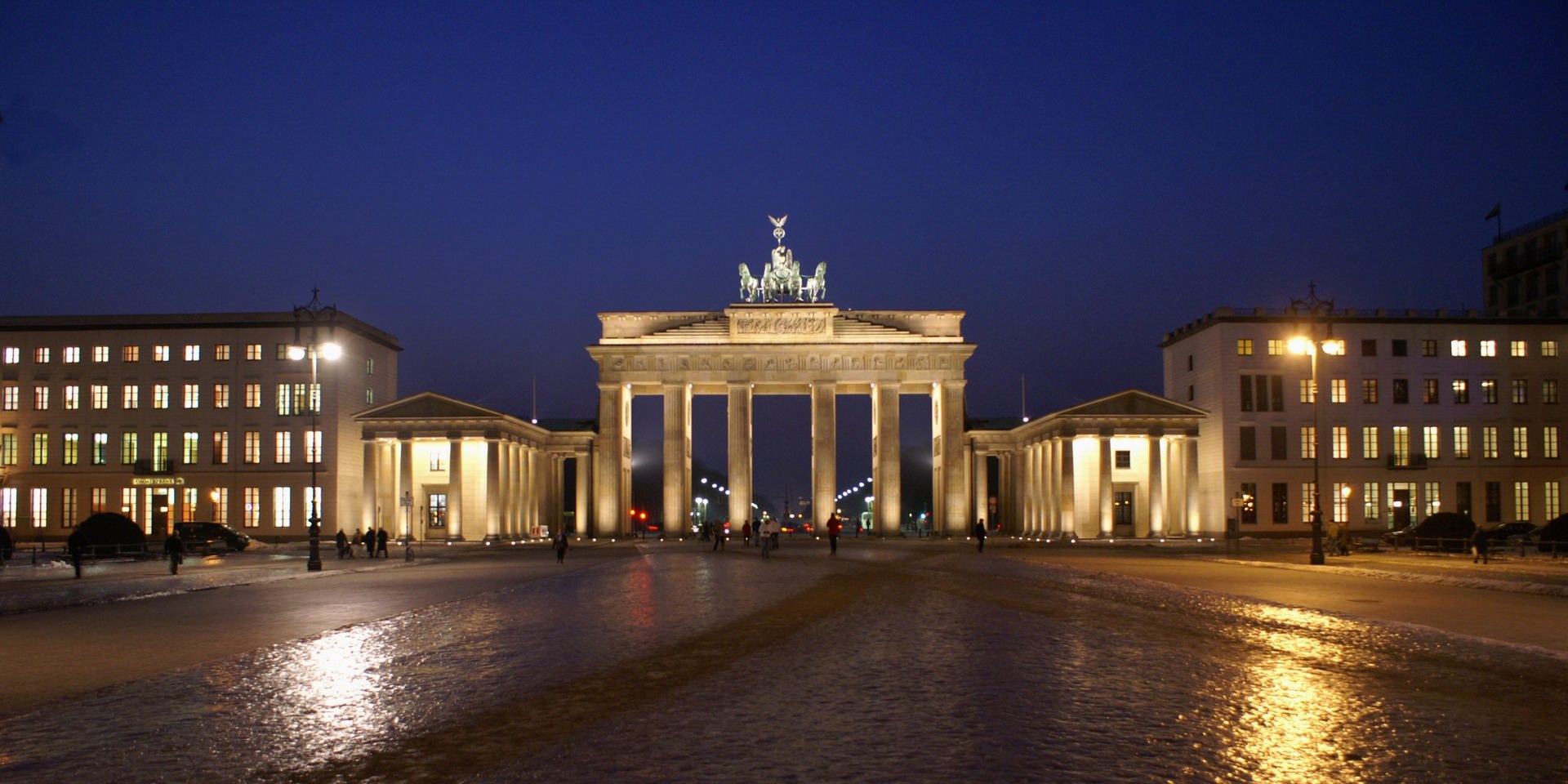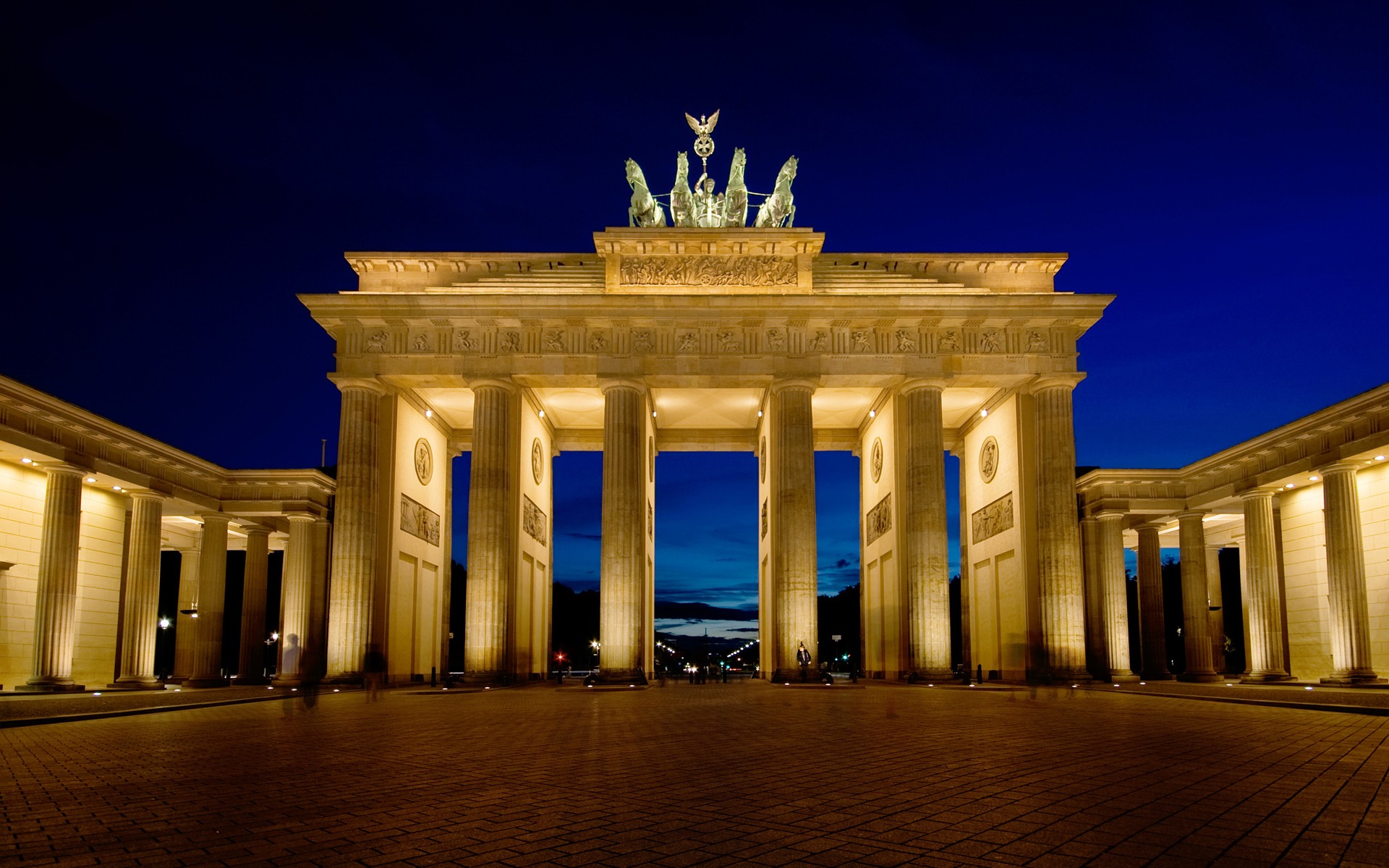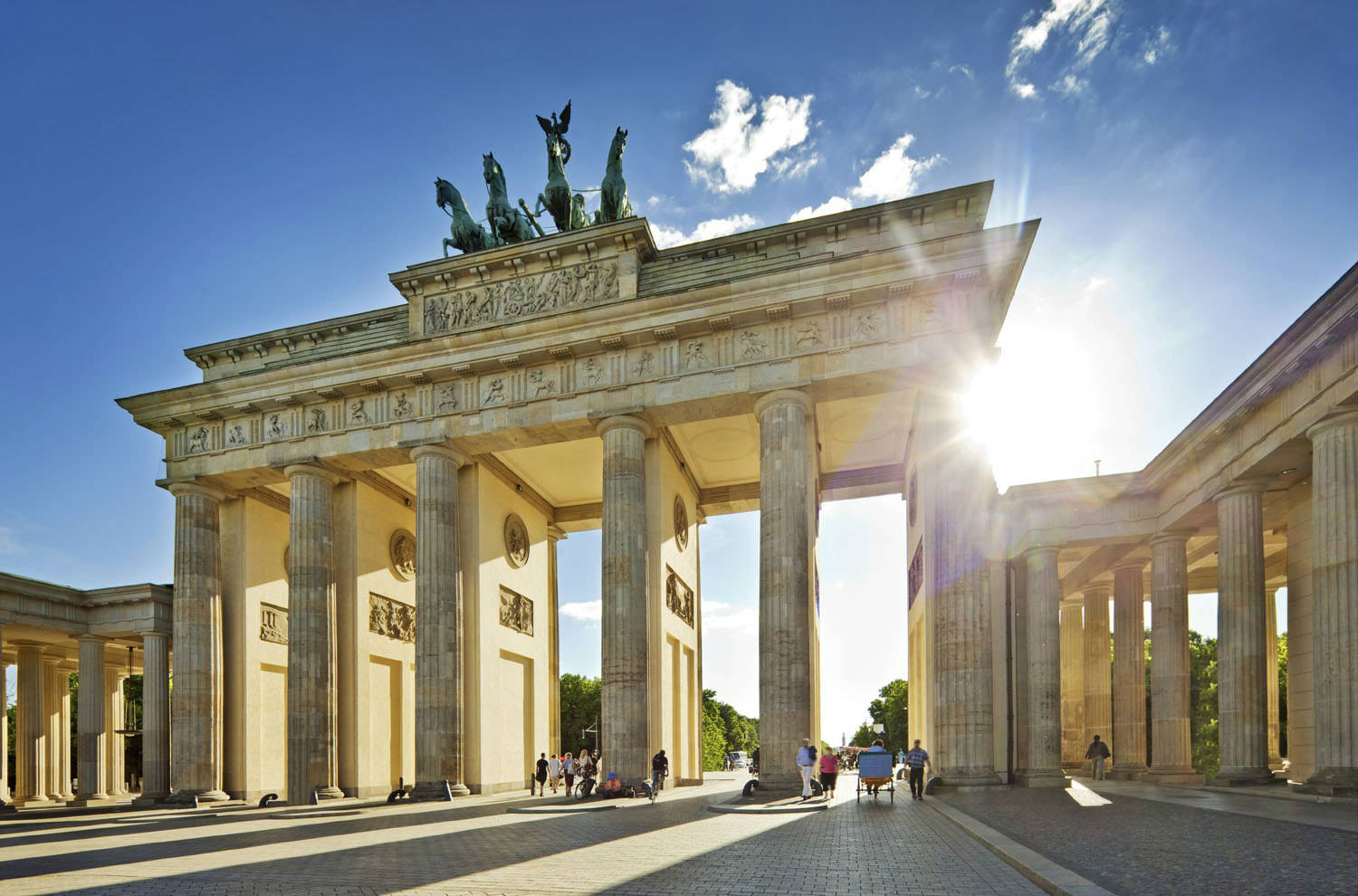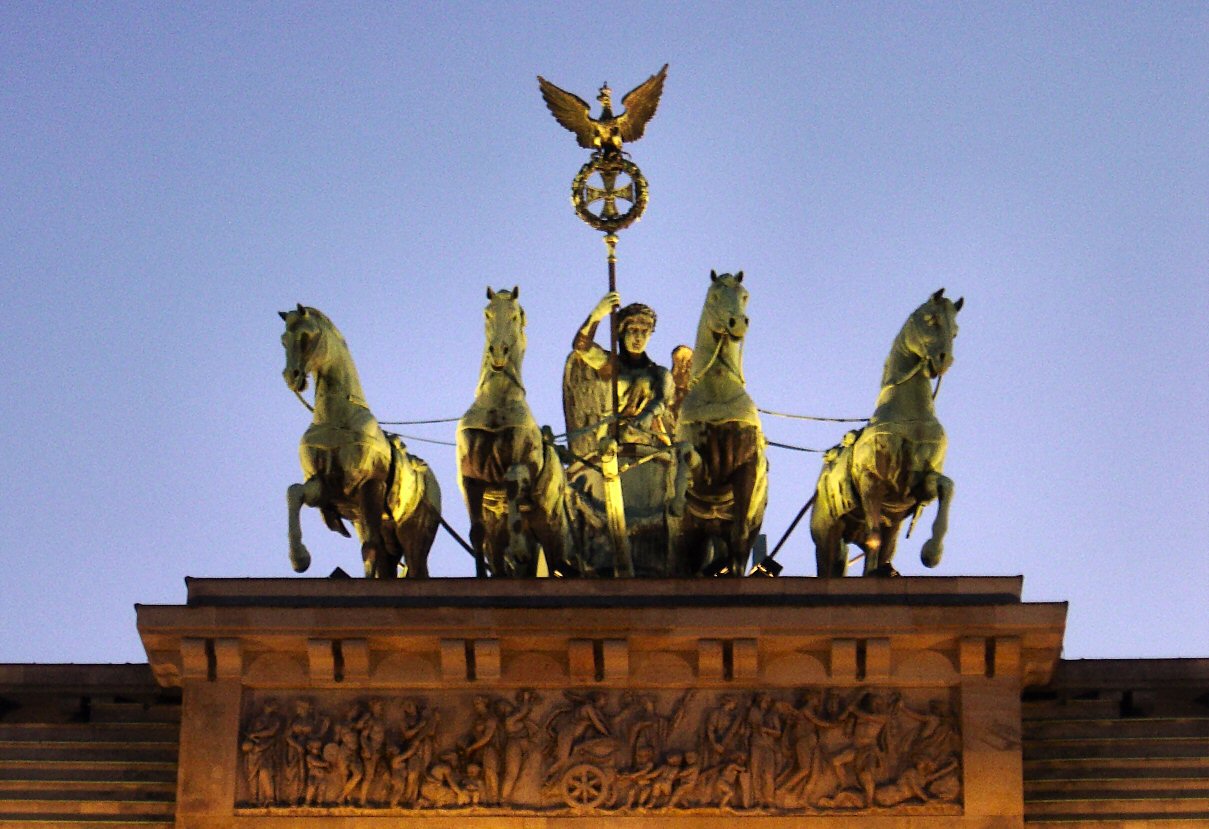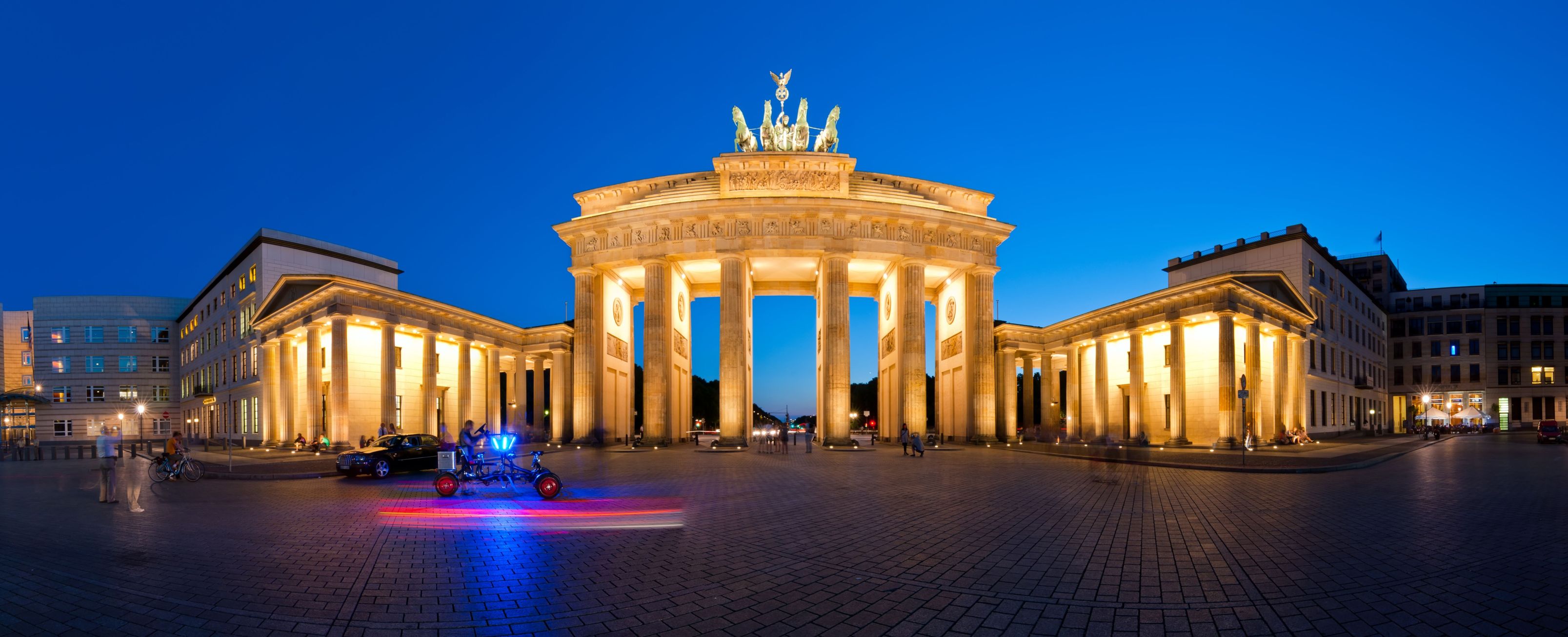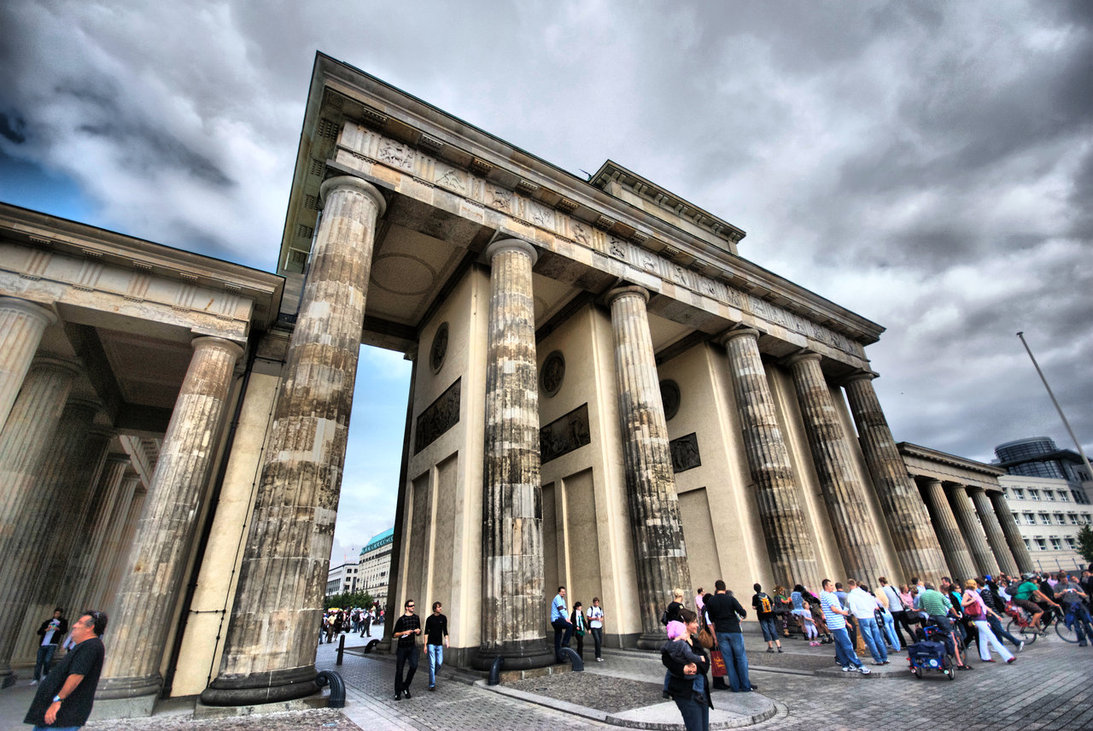Built between 1788 and 1791 by Prussian King Frederick William II as a key entry point to the city of Berlin, Brandenburg Gate was topped off with a statue known as the “Quadriga,” which depicted a statue of the goddess of victory driving a chariot pulled by four horses. The statue remained in place for just over a decade, before falling into the clutches of Napoleon Bonaparte and his Grand Army. After occupying Berlin that fall and triumphantly marching beneath the arches of the Gate, Napoleon ordered the Quadriga dismantled and shipped back to Paris. The horse and goddess were hastily packed up in a series of crates and moved across the continent. Napoleon, perhaps preoccupied with the crumbling of his recently established empire, appears to have forgotten about the statue, and it languished in storage until 1814, when Paris itself was captured by Prussian soldiers following Napoleon’s defeat. The Quadriga was returned to Berlin and once again installed atop the Brandenburg Gate, this time with one change: As a symbol of Prussia’s military victory over France, an iron cross was added to the statue. The cross was later removed during the Communist era, and only permanently restored in 1990 during the unification of Germany.
After a meteoric rise to power at the head of his Nazi Party and a power struggle with German President Paul von Hindenburg, Adolf Hitler was appointed to the position of chancellor on January 30, 1933. That evening, the new chancellor was treated to a torchlight procession through Berlin, as thousands of brown shirted stormtroopers and SS members passed under the Brandenburg Gate to the presidential palace, where Hitler and high-ranking members of the Nazi Party were cheered. It was the first of many large-scale propaganda events held by the Nazis as they tightened their control over Germany in the years leading up to World War II. The end of the war destroyed much of Berlin, but the Brandenburg Gate survived, albeit with heavy damage. In one of the last cooperative measures before the erection of the Berlin Wall in 1961, the East and West Berlin authorities worked together on its restoration. Once the wall went up, however, access to the Gate, located in what was now East Berlin, was cut off.




